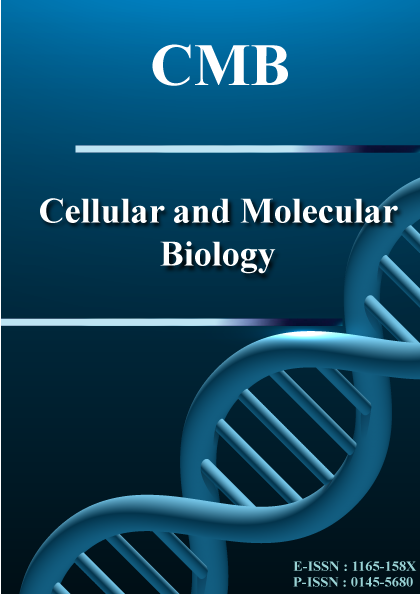Issue
Copyright (c) 2024 Nezar Boreak Nezar Boreak, Shatha Jafri, Huriyyah Mishal Alotaibi, Thekra Saud Abdullah Abbas, Abdullah Mohammed Bokar, Hajer Bader Muaddi , Reem Alshammakhy, Ghadeer Ahmed Almughallis , Musab Hassan Abdullah Judayba, Essa Mohammed Hakami

This work is licensed under a Creative Commons Attribution-NonCommercial-NoDerivatives 4.0 International License.
The undersigned hereby assign all rights, included but not limited to copyright, for this manuscript to CMB Association upon its submission for consideration to publication on Cellular and Molecular Biology. The rights assigned include, but are not limited to, the sole and exclusive rights to license, sell, subsequently assign, derive, distribute, display and reproduce this manuscript, in whole or in part, in any format, electronic or otherwise, including those in existence at the time this agreement was signed. The authors hereby warrant that they have not granted or assigned, and shall not grant or assign, the aforementioned rights to any other person, firm, organization, or other entity. All rights are automatically restored to authors if this manuscript is not accepted for publication.Targeting acetate kinase of Porphyromonas gingivalis: a computational approach to identifying novel inhibitors for endodontic infection treatment
Corresponding Author(s) : Nezar Boreak
Cellular and Molecular Biology,
Vol. 71 No. 2: Issue 2
Abstract
This study explores a novel approach to treating endodontic infections by targeting the acetate kinase (Ack) enzyme of Porphyromonas gingivalis, a key pathogen in these infections. Using computational methods, we developed an apo receptor-based E-pharmacophore model of P. gingivalis Ack and screened the ZINC Lead-Like database containing over 1.8 million compounds. High-throughput virtual screening and molecular dynamics simulations identified ZINC001306857494 as a promising lead compound, demonstrating stable binding to the Ack active site with a binding free energy of -41.66 kcal/mol. The compound forms multiple hydrogen bonds with highly conserved residues, including Leu119, His180, and Arg241. Molecular dynamics simulations over 250 ns confirmed the stability of the protein-ligand complex, with sustained interactions throughout the simulation period. This study presents a potential new scaffold for developing Ack inhibitors, offering a promising avenue for treating endodontic infections caused by P. gingivalis.
Keywords
Download Citation
Endnote/Zotero/Mendeley (RIS)BibTeX




